Design of Low-Glared LED Rear Light of Automotive for EU ECE Regulation by Use of Optimized Micro-Prisms Array
Abstract
:1. Introduction
2. Optics Design and Simulation Experiments
3. Optical Experiments–Optical Measurement and Analysis
4. Discussion
5. Conclusions
Author Contributions
Funding
Conflicts of Interest
References
- Yu, J.C.; Chen, Z.Y.; Kao, B.D. Optical design and optimization of planar curved LED end-lit light bar. Appl. Opt. 2014, 53, H67–H75. [Google Scholar] [CrossRef] [PubMed]
- Mügge, M.; Hohmann, C. Signal lights–designed light for rear lamps and new upcoming technologies: Innovations in automotive lighting. Adv. Opt. Technol. 2016, 5, 117–128. [Google Scholar] [CrossRef]
- Chang, R.S.; Tsai, J.Z.; Li, T.Y.; Liao, H.L. LED backlight module by lightguide-diffusive component. J. Disp. Technol. 2012, 8, 79–86. [Google Scholar] [CrossRef]
- Wu, T.; Sher, C.W.; Lin, Y.; Lee, C.F.; Liang, S.; Lu, Y.; Huang Chen, S.W.; Guo, W.; Kuo, H.C.; Chen, Z. Mini-LED and micro-LED: Promising candidates for the next generation display technology. Appl. Sci. 2018, 8, 1557. [Google Scholar] [CrossRef] [Green Version]
- Sun, C.C.; Moreno, I.; Chung, S.H.; Chien, W.T.; Hsieh, C.T.; Yang, T.H. Brightness management in a direct LED backlight for LCD TVs. J. Soc. Inf. Disp. 2008, 16, 519–526. [Google Scholar] [CrossRef]
- Sun, C.C.; Chien, W.T.; Moreno, I.; Hsieh, C.T.; Lin, M.C.; Hsiao, S.L.; Lee, X.H. Calculating model of light transmission efficiency of diffusers attached to a lighting cavity. Opt. Express 2010, 18, 6137–6148. [Google Scholar] [CrossRef] [PubMed]
- Zhuang, Z.; Zhang, L.; Surman, P.; Guo, S.; Cao, B.; Zheng, Y.; Sun, X.W. Directional view method for a time-sequential autostereoscopic display with full resolution. Appl. Opt. 2016, 55, 7847–7854. [Google Scholar] [CrossRef] [PubMed]
- Wang, Y.J.; Ouyang, S.H.; Chao, W.C.; Lu, J.G.; Shieh, H.P. High directional backlight using an integrated light guide plate. Opt. Express 2015, 23, 1567–1575. [Google Scholar] [CrossRef] [PubMed] [Green Version]
- Li, C.J.; Fang, Y.C.; Cheng, M.C. Study of optimization of an LCD light guide plate with neural network and genetic algorithm. Opt. Express 2009, 17, 10177–10188. [Google Scholar] [CrossRef] [PubMed]
- Pan, J.W.; Fan, C.W. High luminance hybrid light guide plate for backlight module application. Opt. Express 2011, 19, 20079–20087. [Google Scholar] [CrossRef] [PubMed]
- Kleinkes, M.; Schmidt, C.; Mügge, M.; Hohmann, C. Sicherheit und Design künftiger Heckleuchten. ATZ-Automob. Z. 2012, 114, 70–75. [Google Scholar] [CrossRef]
- Zhang, R. Directional backlighting system using a light guide with paired microstructures. Appl. Opt. 2017, 56, 6735–6741. [Google Scholar] [CrossRef] [PubMed]
- Kimmel, J. Diffractive backlight technologies for mobile applications. J. Soc. Inf. Disp. 2012, 20, 245–258. [Google Scholar] [CrossRef]
- Van Derlofske, J.F. Computer modeling of LED light pipe systems for uniform display illumination. InSolid State Lighting and Displays. Int. Soc. Opt. Photonics 2001, 4445, 119–129. [Google Scholar]
- Yu, J.C.; Hsu, P.K. Integration of stamper fabrication and design optimization of LCD light guides using silicon-based microfeatures. Microsyst. Technol. 2010, 16, 1193–1200. [Google Scholar] [CrossRef] [Green Version]
- Eichhorn, K. LEDs in automotive lighting. In Light-Emitting Diodes: Research, Manufacturing, and Applications X. Int. Soc. Opt. Photonics 2006, 6134, 613405. [Google Scholar]
- Ronny, R.A.; Knopf, G.K.; Bordatchev, E.V.; Nikumb, S. Micromilled optical elements for edge-lit illumination panels. J. Micro/Nanolithograph. MEMS MOEMS 2013, 12, 023002. [Google Scholar] [CrossRef] [Green Version]
- Vehicles, P.D. Concerning the Adoption of Uniform Technical Prescriptions for Wheeled Vehicles, Equipment and Parts Which Can be Fitted and/or be Used on Wheeled Vehicles and the Conditions for Reciprocal Recognition of Approvals Granted on the Basis of These Prescriptions, 2009. United Nations, Economic Commission for Europe Inland Transprot Committee. Available online: https://wiki.unece.org/download/attachments/3179169/TF-LNG-06-02.pdf (accessed on 23 January 2020).
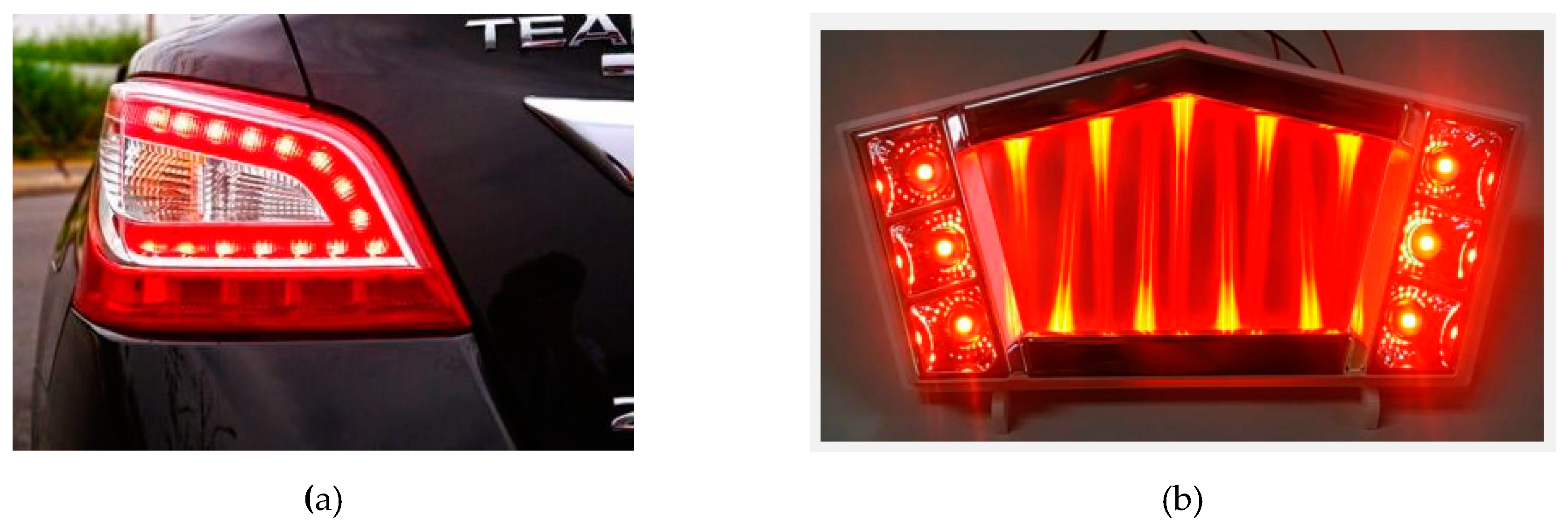




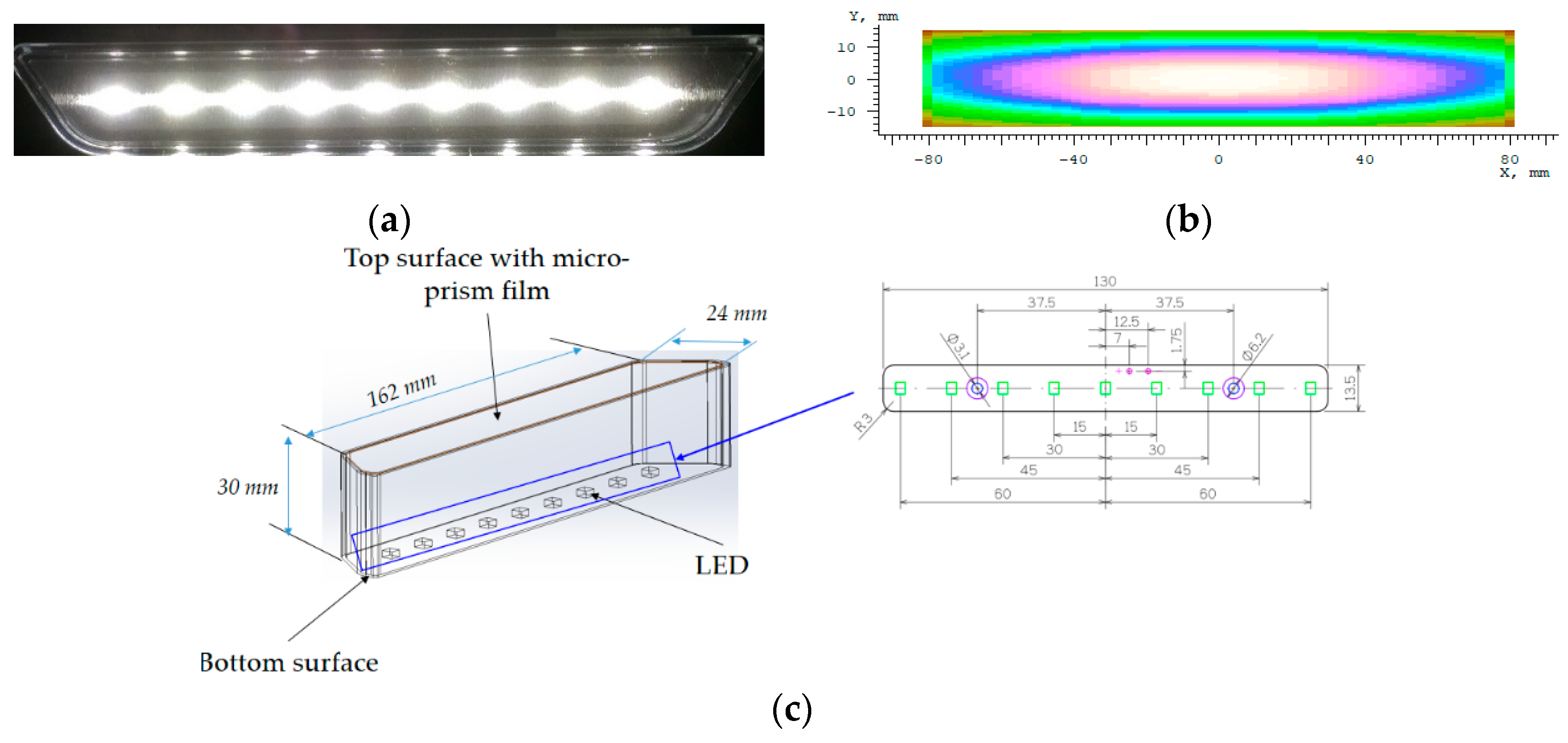



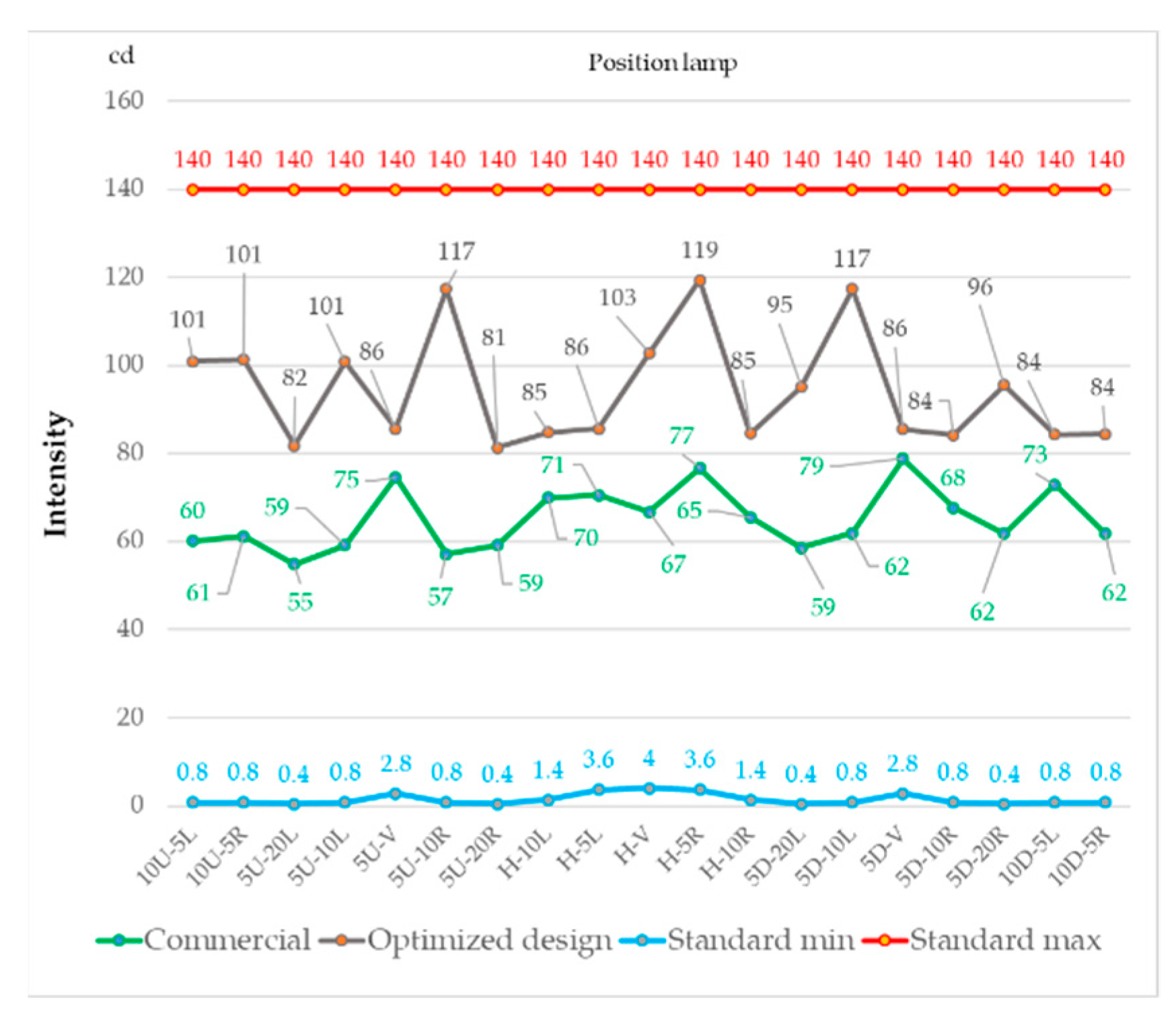
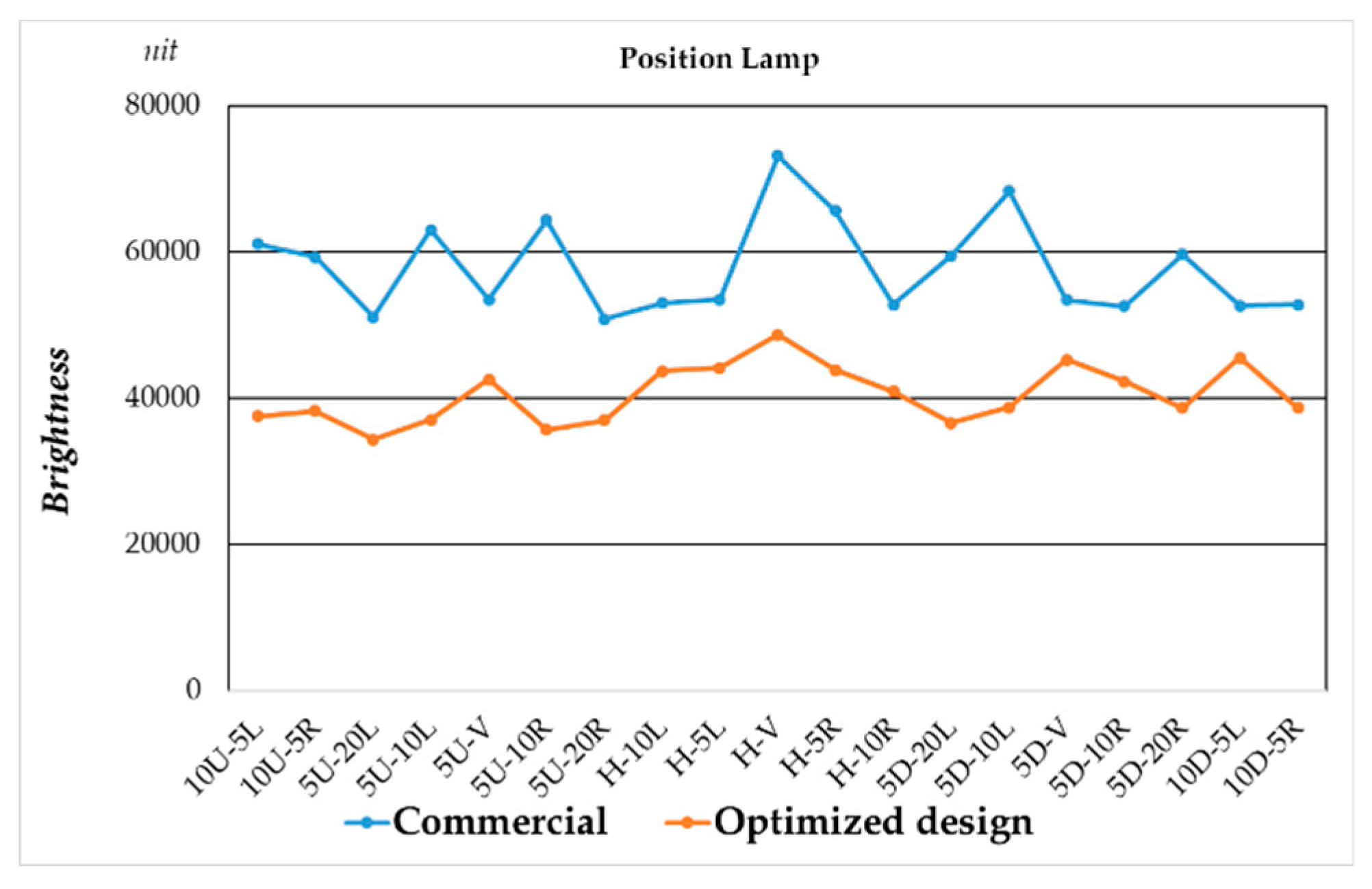

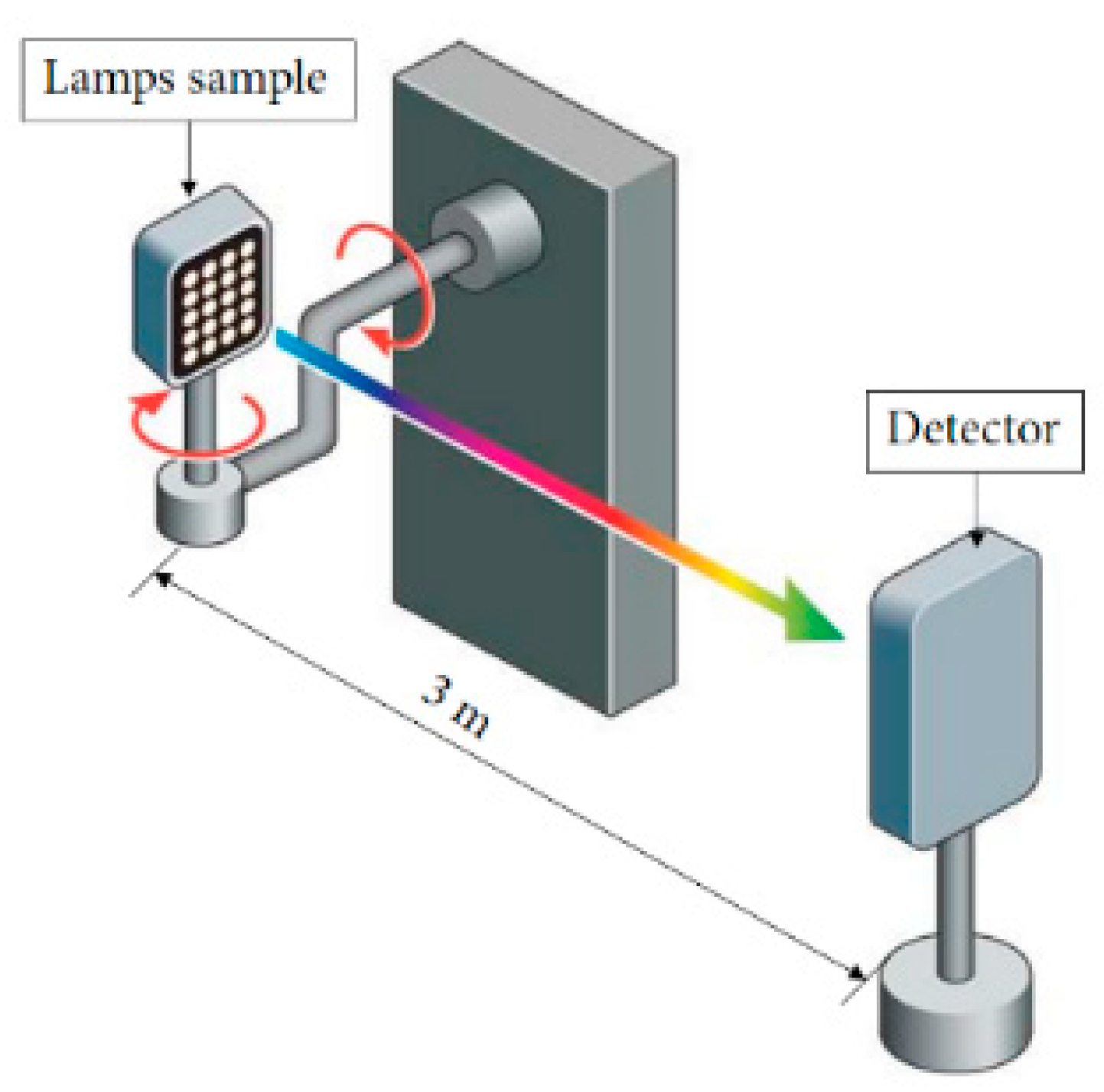
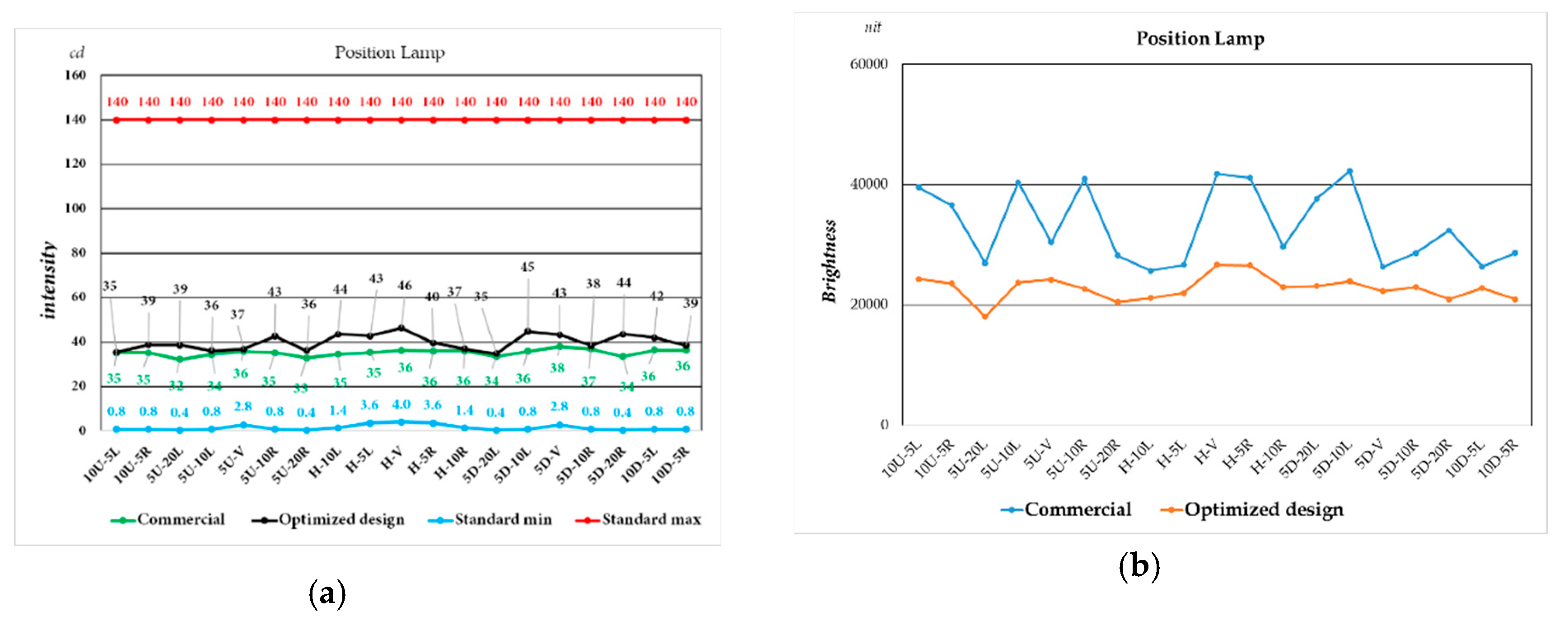



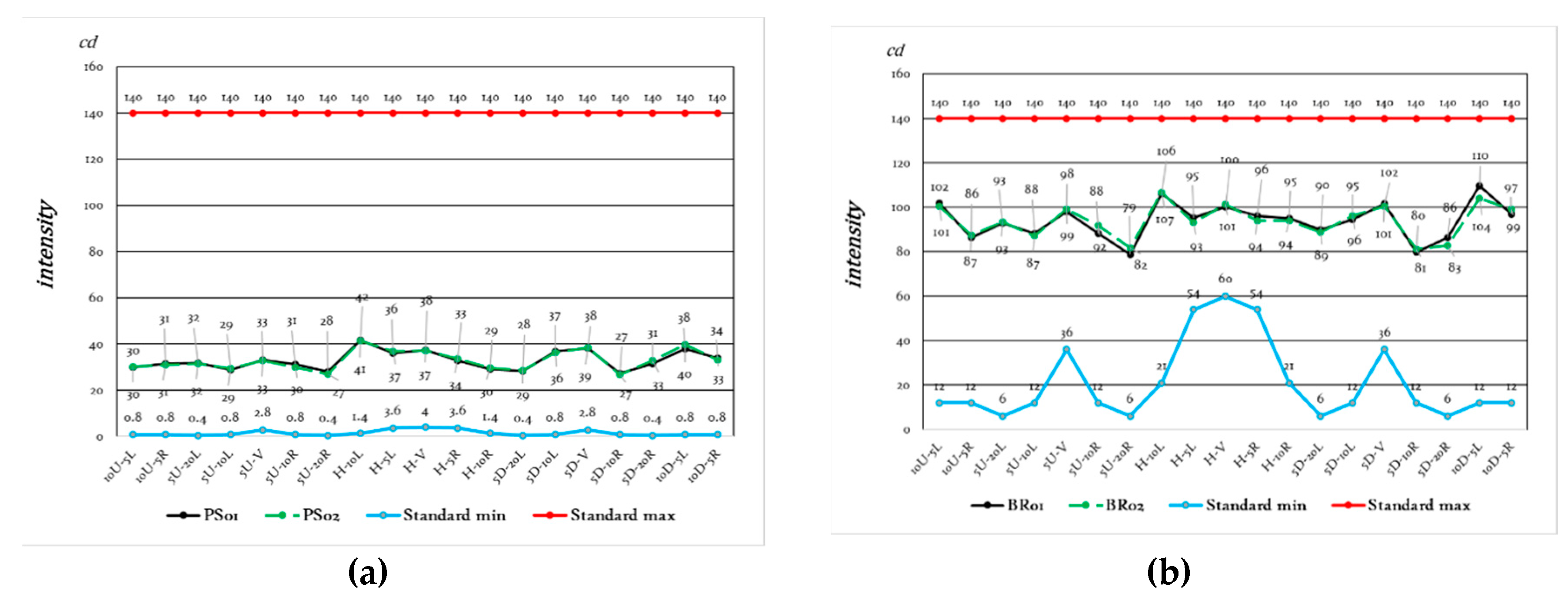
© 2020 by the authors. Licensee MDPI, Basel, Switzerland. This article is an open access article distributed under the terms and conditions of the Creative Commons Attribution (CC BY) license (http://creativecommons.org/licenses/by/4.0/).
Share and Cite
Le, H.-T.; Le, L.-T.; Liao, H.-Y.; Chen, M.-J.; Ma, H.-Y.; Lee, H.-Y. Design of Low-Glared LED Rear Light of Automotive for EU ECE Regulation by Use of Optimized Micro-Prisms Array. Crystals 2020, 10, 63. https://doi.org/10.3390/cryst10020063
Le H-T, Le L-T, Liao H-Y, Chen M-J, Ma H-Y, Lee H-Y. Design of Low-Glared LED Rear Light of Automotive for EU ECE Regulation by Use of Optimized Micro-Prisms Array. Crystals. 2020; 10(2):63. https://doi.org/10.3390/cryst10020063
Chicago/Turabian StyleLe, Hien-Thanh, Lanh-Thanh Le, Hsing-Yuan Liao, Ming-Jui Chen, Hsin-Yi Ma, and Hsiao-Yi Lee. 2020. "Design of Low-Glared LED Rear Light of Automotive for EU ECE Regulation by Use of Optimized Micro-Prisms Array" Crystals 10, no. 2: 63. https://doi.org/10.3390/cryst10020063
APA StyleLe, H.-T., Le, L.-T., Liao, H.-Y., Chen, M.-J., Ma, H.-Y., & Lee, H.-Y. (2020). Design of Low-Glared LED Rear Light of Automotive for EU ECE Regulation by Use of Optimized Micro-Prisms Array. Crystals, 10(2), 63. https://doi.org/10.3390/cryst10020063





